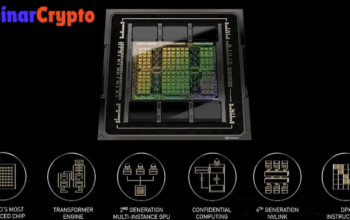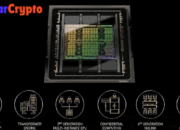In an age where data is deemed the new oil, the intersection of artificial intelligence (AI) and blockchain technology has emerged as a beacon of hope for data privacy. As we witness a relentless expansion of digital platforms, concerns regarding data silos and user privacy grow increasingly prominent. This article explores how blockchain, as a Web3 tool, is revolutionizing the way we think about data ownership and privacy in the AI landscape.
The Problem of Data Silos
What are Data Silos?
Data silos refer to isolated repositories of information that are not easily accessible or shareable across different platforms or systems. In the context of AI, these silos can lead to several issues:
- Limited Collaboration: Organizations are unable to share data efficiently, which restricts the potential for innovation and growth.
- Privacy Concerns: Personal data is often collected without consent and stored in ways that are not transparent to users.
- Inefficient Data Utilization: Businesses struggle to harness the full potential of data trapped in silos, hindering effective AI models.
The Rise of AI and Its Implications
As businesses increasingly rely on AI for decision-making, the need for vast amounts of data intensifies. However, with traditional data handling practices, user privacy is often compromised. Personal information is frequently collected and utilized without the knowledge or consent of individuals, leading to a growing mistrust in digital services.
Enter Blockchain: A Web3 Solution
Understanding Blockchain Technology
Blockchain is a decentralized, distributed ledger technology that allows for the secure and transparent storage of data. Its inherent characteristics—such as immutability, transparency, and decentralization—make it an ideal solution to combat data silos and enhance user privacy.
How Blockchain Addresses Data Silos
- Decentralization: Unlike traditional databases controlled by a single entity, blockchain distributes data across a network of computers. This decentralization ensures that no single party can monopolize data, reducing the risk of silos.
- User Control: Blockchain allows users to control their data. With self-sovereign identities (SSI) and decentralized applications (dApps), individuals can share their data selectively and revoke access at any time.
- Transparency and Trust: The transparent nature of blockchain fosters trust among users. Every transaction is recorded and can be audited, ensuring that users are aware of how their data is used.
- Interoperability: Blockchain can enable different platforms to share data seamlessly, breaking down silos and facilitating collaboration across sectors.
The Privacy Paradigm Shift
Empowering Users with Privacy
With blockchain as a foundational element of Web3, users are empowered to reclaim control over their personal information. This shift represents a move away from the traditional data ownership model, where corporations hold vast amounts of user data, to a more equitable system where individuals retain ownership and control.
The Role of AI in a Blockchain-Enabled World
While blockchain provides the framework for data privacy, AI still plays a crucial role. AI can be harnessed to analyze data without compromising user privacy by utilizing techniques like federated learning, where algorithms learn from decentralized data without the need to centralize it.
Conclusion: A Future of Data Privacy
As we navigate the complexities of AI and data management, the emergence of blockchain as a Web3 tool offers a promising solution to the issue of data silos. By prioritizing decentralization, user control, and transparency, we can usher in a new era of data privacy that not only protects individuals but also fosters innovation and collaboration.
The journey to a more private, user-centric digital landscape is ongoing, and with the integration of blockchain technology, the future looks brighter than ever. Together, AI and blockchain can redefine the relationship we have with our data, allowing us to reclaim our privacy in an increasingly connected world.












